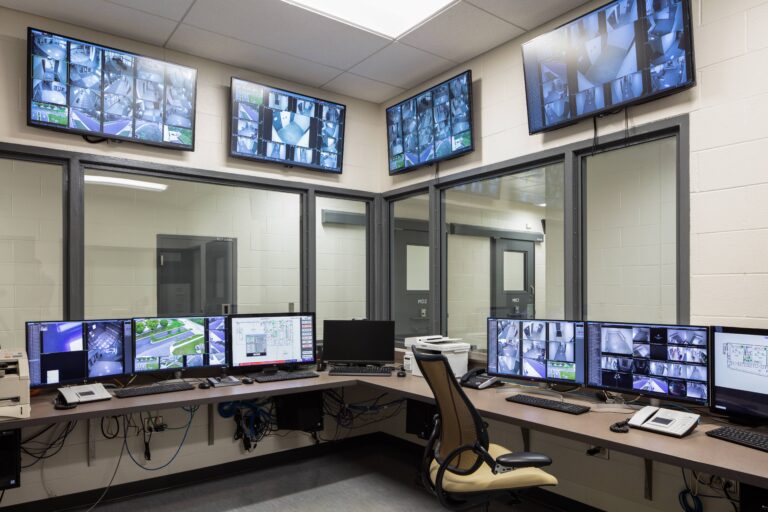Correctional administrators are facing new and unique challenges as the philosophies and principles that drive the operational and program approaches evolve within prisons and jails.
Among the critical issues that are impacting correctional operations today include the significant change in the utilization and components of restrictive housing, the documented increases in incarcerated diagnosed mental health cases and the accompanying treatment and housing requirements, the changing demographics of the inmate population due to the increased effectiveness of diversion and alternative programs, and the increased challenges of maintaining an adequate and professional workforce.
Each of these issues are changing the face of the correctional environment and impacting correctional administration strategies, program delivery approaches, facility design requirements, staffing approaches and the technology needed to support the security requirements and program delivery approaches of correctional systems.
In general terms, restrictive-status housing is a form of housing for inmates whose continued presence in the general population would pose a serious threat to property, self, staff or other inmates, or to the security or orderly operation of a correctional facility.
The members of the Association of State Correctional Administrators (ASCA) have long recognized the importance of managing inmates who pose a serious threat to staff, other inmates or to the safe operation of the correctional facilities they administer.
Guiding Principles
In the last three years, ASCA re-committed as an organization to the principle of managing inmates in the least-restrictive way necessary to carry out the mission of its facilities. Led by Gary Mohr, director of the Ohio Department of Rehabilitation and Correction, ASCA developed and adopted guiding principles designed to refocus the use of restrictive housing only for those who represent the most serious threat to the safety and security of staff and inmates. Critical to these principles is that an offender’s length of stay in restrictive housing should be determined based on the nature and level of threat to the safe and orderly operation of the general population as well as program participation, rule compliance and the recommendation of the person(s) assigned to conduct the classification review as opposed to strictly held time periods, according to ASCA’s Guiding Principles for Restrictive Housing.
Consistent with this approach is the intent to expand access to programming, recreation, treatment and mental health assessments by trained personnel, in the case of those with mental health indicators. The guiding principles also recognize that restrictive housing should be designed to create a path for those inmates in this status to transition to a less-restrictive setting.
The adoption of these guiding principles by ASCA has been followed by the adoption of new standards for accreditation by the American Corrections Association (ACA). In addition, numerous jurisdictions have formally taken steps to fully implement these guiding principles. However, implementation has significant implications for altering the management strategies for this population and the facilities as a whole.
There is an expanded need to develop appropriate treatment approaches and protocols along with housing options that is appropriate for managing both the security needs of this population as well as providing the treatment space requirements that accompany this special population. For most jurisdictions, appropriate physical space is not available to manage the increased numbers of offenders who have been diagnosed and require treatment interventions. Jurisdictions have been required to modify existing space or initiate major capital projects in order to meet the increasing needs of this population.
Additionally, with the strong emphasis on alternatives and diversion programs from both jails and prisons, the offender demographics of these jurisdictions have changed dramatically along with the classification needs of the populations. The most extreme example of this is occurring in California where realignment programs have changed the demographics of the populations of both the jails and prisons there. Similar, but less obvious changes, have occurred nationally where the emphasis on diversion programs have removed lower-risk offenders from jails and prisons, and left systems with populations that have a higher percentage of high-risk offenders than was the case previously.
In many jurisdictions, this has left the systems with bed capacities that are misaligned with the custody and classification needs of the populations. Oftentimes systems are faced with increasing numbers of higher-risk offenders that must be fit into housing capacities that tend to be high on the number of low-custody beds. Many of the facilities that were fast tracked in the 1980s and 1990s to address the population explosion within prisons were designed as low-security, dormitory housing. Today’s demographics are making these types of beds mismatched with the custody needs of the population, which require more high-custody housing. Jurisdictions will need to adjust over time to the changing demographics through remodeling, mothballing, new construction and other options that can be done through intense master planning of the system’s capacity needs.
Work Force
Lastly, jurisdictions throughout the U.S. are facing staff shortages, high turnover and limited success in the recruitment of the required number of staff. In some cases, this is a direct result of low salaries and limited benefits for employees, but often is also a result of the fiscal limitations of the state budgets and the need to cut spending.
The fiscal reality of the state budgets indicates that this is not a short-term problem that can be easily corrected. As a result, systems must plan for a continuation of these staff shortages and adjust operations accordingly.
The problems and issues that correctional administrators face in today’s environment require creative approaches to providing new and expanded services with even fewer resources. In many cases, jurisdictions are hampered by facilities that are outdated, inefficient, staff intensive and do not support modern technology. Jurisdictions need to re-engineer their systems through enhanced master planning and an examination of all possible options to improve efficiency and effectiveness.
***
This article originally appeared in the May/June 2017 issue of Correctional News Magazine.





